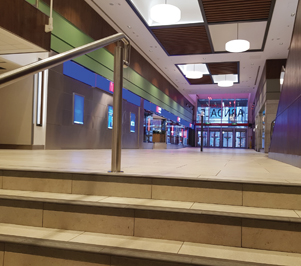It did not lead to a years-long public inquiry and has attracted little public debate or security industry ‘lessons learned’ discussion. It thankfully did not lead to loss of life, although the unprovoked knife attack by a lone man in the Arndale shopping mall in Manchester city centre caused widespread fear and panic among the public and staff, on Friday morning, October 11, 2019.
Last month Manchester Crown Court heard that police attended the scene and detained a man, who was admitted to Ashworth High Security Hospital. Later, enquiries including expert evidence from psychiatrists who confirmed that the attacker was responsible for his actions, notwithstanding a previous diagnosis of schizophrenia. The police and Crown Prosecution Service (CPS) worked together to ascertain if there was any terrorist connection to the offences and ultimately concluded there was not. A 43-year-old man was sentenced to a hospital order for three offences of wounding with intent and two offences of attempted wounding; he pleaded guilty to all the offences.
After the case, Nick Price, Head of the CPS Counter-Terrorism Division, described the attack as shocking and unprovoked, and said the sentence imposed by the court reflected the seriousness of the actions and the level of danger posed to the public. “I am pleased that he has taken responsibility for his actions through his guilty pleas and that the victims and other witnesses who have provided statements were not required to give evidence in court.”
While the Manchester Arena Inquiry into the suicide bombing of May 22, 2017 has led to a first report on the security protection and policing of the Arena (with two more volumes on other subjects still to follow), and likely significant implications for the industry generally, through Security Industry Authority (SIA) work to meet the findings of the Inquiry so far, and a potential Protect Duty; the Arndale attack has led to no such inquiry into security policies.
However, the case has much to teach – and not only about the initial minutes of an attack; when priorities include finding out what has happened, and protecting those in the vicinity of an attack by evacuating them to safety. Managers of the affected site have to account for anyone in the area, a task not only for security people. For if social media is buzzing with speculation, about casualties, no matter if based on rumour, how to manage that? It can be surprisingly unstraightforward to make sure that everyone is safe, at such a large site as the Arndale, where some people may have responded by – according to official advice – hiding, on the run-hide-tell principle.
Even when a site returns to normal – the Arndale was open for business as usual the next morning – the security and other service operators ought to factor in people to take over from the crisis managers; for adrenalin can only take anyone so far before they need a rest. More in the March print edition of Professional Security magazine.
Photo: Arndale, morning, by Mark Rowe.










